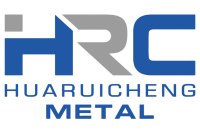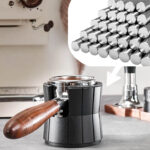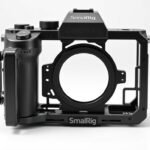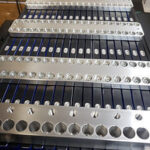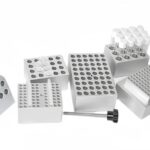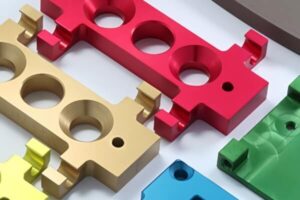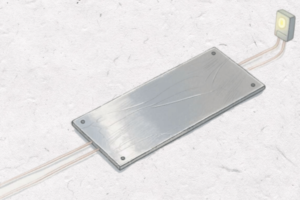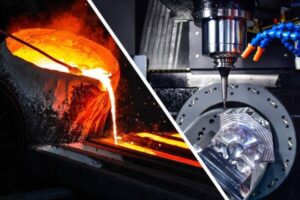When looking into metal fabrication, knowing the difference between cast aluminium and CNC aluminium is key. Cast aluminium is made by pouring molten metal into a mold. This creates complex shapes and is cost-effective for detailed designs.
CNC aluminium, however, uses computer-controlled machines to cut aluminum blocks. This method ensures precise cuts and high-quality finishes. This guide helps you understand these processes. It’s designed to help those in aluminum fabrication make the right choice for their projects.
What Is CNC Machined Aluminum?
CNC machined aluminum is made using advanced technology and machines. It creates precise parts from aluminum. This method is key in cnc machining, making detailed parts with great accuracy. Aluminum fabricators use CNC machining for its efficiency and quality.
Advantages of CNC Machined Aluminum
Using CNC machined aluminum has many benefits. Key advantages include:
- High Precision: CNC machining ensures parts fit perfectly in assemblies.
- Complex Geometries: It makes detailed designs that traditional methods can’t.
- Excellent Surface Finish: CNC machining gives parts a smooth finish, often avoiding extra finishing steps.
- Increased Efficiency: The automated process speeds up production without losing accuracy.
Limitations of CNC Machining
Despite its benefits, CNC machined aluminum has some drawbacks:
- Higher Manufacturing Costs: Buying CNC machines and tools is expensive.
- Longer Lead Times for Prototyping: Making prototypes takes longer because of the need for special tooling.
- Material Waste: The process can create waste, especially with aluminum sheet metal.
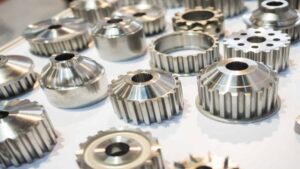
What Is Die Cast Aluminum?
Die cast aluminum is a way to make parts by pouring molten aluminum alloy into a mold. This method lets makers create detailed shapes and designs. It’s great for making parts that are consistent and of high quality.
Advantages of Die Cast Aluminum
Die cast aluminum is fast to make, allowing for many parts to be created quickly. The parts often have a smooth finish and exact dimensions. This is good for projects that need to be precise.
Also, die cast aluminum is light, making it easy to move around. Using aluminum sheet metal in this process makes the parts strong but still light.
Limitations of Aluminum Casting
Aluminum casting has some downsides. For example, making molds can be expensive. Good molds are key for efficient casting, which can be pricey for small batches.
Die casting also has limits on how complex designs can be. This might make CNC machining better for some projects. Knowing these points helps choose the best method for your needs.
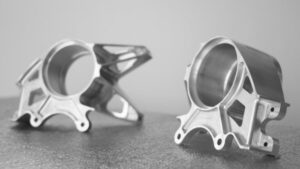
When to Use Machined Aluminum vs. Cast Aluminum
The choice between machined aluminum and cast aluminum depends on your project needs. Machined aluminum is great for projects needing high precision and custom designs. It’s often used in aerospace and robotics for its detailed designs and tight tolerances.
Cast aluminum is better for making lots of parts quickly and cheaply. It’s perfect for car parts and other items that need to be made in large numbers. Cast aluminum is cheaper to make than machined parts, saving money for manufacturers.
When deciding, think about a few things:
- Application Requirements: Check if your design needs high precision and complex details.
- Production Volume: Decide if you need many parts or just a few custom ones.
- Budget: Compare the costs of machining and casting, including materials and labor.
Knowing the differences between machining and casting is key in aluminum fabrication. Making the right choice means looking at your project’s specific needs. This leads to the best results and cost savings in metal fabrication.
What Are the Key Differences Between Cast and CNC Aluminium?
Knowing the differences between cast and CNC aluminum is key in aluminum fabrication. The choice between these methods affects the production, material quality, and cost of the final product. Cast aluminum is cheaper and can make complex shapes. CNC aluminum, on the other hand, offers precision and a better finish.
When to Use Machined Aluminum vs. Cast Aluminum
Choosing between these methods depends on several factors:
- Production volume: Cast aluminum is best for making lots of parts quickly and at a lower cost.
- Design complexity: CNC aluminum is great for projects needing detailed and precise shapes.
- Material properties: The choice depends on the strength and weight needed for the project.
- Overall costs: Cast aluminum is more affordable for budget-conscious projects. CNC aluminum might be worth the extra cost for its quality and less waste.
What Are the Key Differences Between Cast and CNC Aluminium?
Knowing the differences between cast and CNC aluminum is key for businesses and manufacturers. Cast aluminum is cheaper and can make complex shapes. It’s perfect for big parts and lots of them. CNC machined aluminum, however, is all about precision and a smooth finish. It’s great for detailed designs and where exact measurements matter.
Choosing between cast and CNC aluminum depends on your project’s needs. For detailed aluminum sheet metal, CNC machining is the way to go. But if you’re looking to save money and don’t need exact measurements, cast aluminum might be better. Both methods are good for metal fabricators, but they serve different needs.
Understanding these differences helps businesses make smart choices about their manufacturing. By looking at design, cost, and how many parts you need, you can pick the right method. Whether you choose cast or CNC aluminum, knowing what each offers is key to a successful project.
